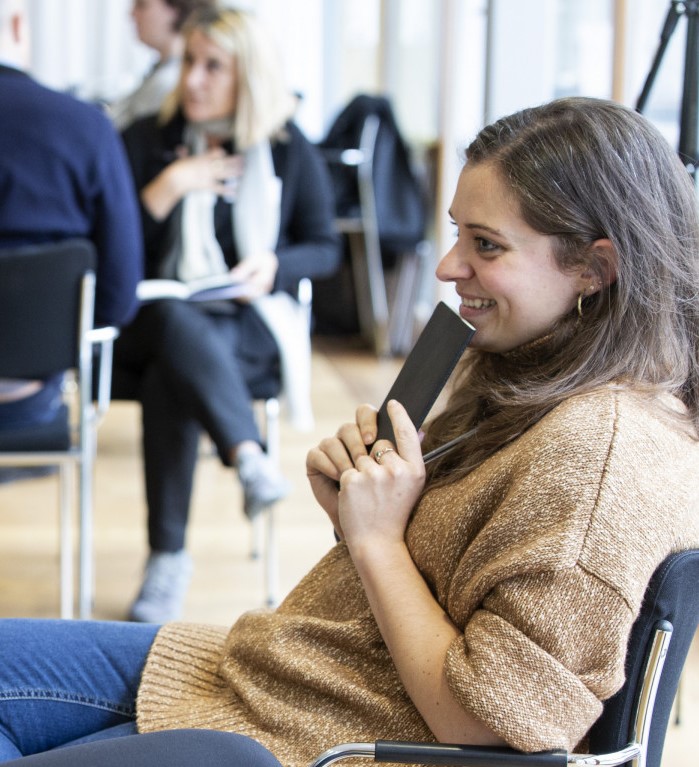Welcome to the Social Psychology Glossary!
In these posts, I will explain Social Psychology terms and theories and add some examples from research.
These terms and theories help social psychologists understand how people perceive others, interact with them, and make judgments about the social world and its members. These psychological processes can impact well-being and decision-making: being aware of their existence is a key factor that helps individuals and society to move towards gender diversity, gender equality, and equality in general.
Today we will talk about Categorization.
Let’s start!
Categorization
Categorization is a process that helps people simplify their perception of the social and physical world. With categorization, a perceiver of the world groups many individual cases (called exemplars in Social Psychology) in one overarching category. For example, let’s think about a parrot called Mindy. We can imagine Mindy as a blue and yellow parrot, shy with strangers, and quite talkative when she hears the shower in the other room.
When we speak with someone about Mindy, we say she is a parrot. We know she is a very specific parrot, with individual characteristics, but we may think that the specific, real characteristics of Mindy are similar to the abstract knowledge we have about parrots. In addition, we assume other people have some knowledge of what a parrot is as well, and that may be the best way to describe Mindy. If when we say “Mindy is a parrot” no one knows what a parrot is, we may say she is a bird. “A bird” may be less specific, as birds include more varieties than parrots, and, on top of that, our Mindy is a specific individual…but at least people won’t think it’s a cat.
In this example, we categorized Mindy first as a parrot, then as a bird. These are simplifications of the characteristics that define Mindy, but they are useful for cognition: we just need to know what a parrot is and we can have a good knowledge of Mindy. Moreover, the process described before goes from an individual to the general category (i.e., bottom-up), because we used the characteristics of Mindy to determine a possible categorization.
This process can also go in the opposite direction when reasoning from the general category to individuals (i.e., top-down). Let’s say we are walking in a forest in Switzerland when we see a flying animal we have never seen before. We have some preexisting knowledge of what birds are, and we have this preexisting knowledge about parrots as well. We do not know all species of birds, but we know the one that sings in the wood is a bird, yet (most probably) not a parrot.
But how do these psychological processes affect our perception of the social world? When we see another person, we implicitly or explicitly process and react to information about their perceived personal characteristics and social identities. Our cognitive processes try to make sense of the real information they have depending also on the systems of categorization that are most accessible in memory. Gender and ethnicity, for example, are usually very accessible in the brain of the perceiver and, for this reason, are frequently used as systems of categorization for others: this means that, when we see another person, it’s likely that our brain implicitly elaborates their perceived gender and ethnic identity. The categories we implicitly or explicitly assign to an individual can impact the way in which we make judgments about and interact with that individual. When an individual is categorized as a woman, for example, the cultural stereotypes associated with women are activated and ready to be used by our cognitive system. Are the categories we apply the right ones? Not always.
Categorization is a process we use frequently, and social categorization processes can be extremely complex. They can be automatic (i.e., outside awareness) or controlled (i.e., intentional), and many other processes and types of the content stem from categorizing. We have described, for example, the knowledge people have about a category (i.e., the characteristics of a parrot) – and that knowledge is abstract and it’s a simplification. In social interactions, this knowledge can influence many cognitive processes and behaviors, but it’s not a category: it’s a Stereotype.
Suggested readings
Higgins, E. T. (1996). Knowledge activation: Accessibility, applicability, and salience. In E. T. Higgins & A. W. Kruglanski (Eds.), Social psychology: Handbook of basic principles (pp. 133–168). New York: Guilford Press.
Kahneman, D. (2011). Thinking Fast and Slow. Farrar, Straus and Giroux, New York.
Kang, S. K., & Bodenhausen, G. V. (2015). Multiple identities in social perception and interaction: Challenges and opportunities. Annual Review of Psychology, 66, 547-574. https://doi.org/10.1146/annurev-psych-010814-015025
Kawakami, K., Amodio, D. M., & Hugenberg, K. (2017). Intergroup perception and cognition: An integrative framework for understanding the causes and consequences of social categorization. Advances in Experimental Social Psychology, 55, 1-80. https://doi.org/10.1016/bs.aesp.2016.10.001

Train the sponsor — Implementation of a new mentoring training (UK)

Pingback: Social Psychology Glossary (2) - Solutions